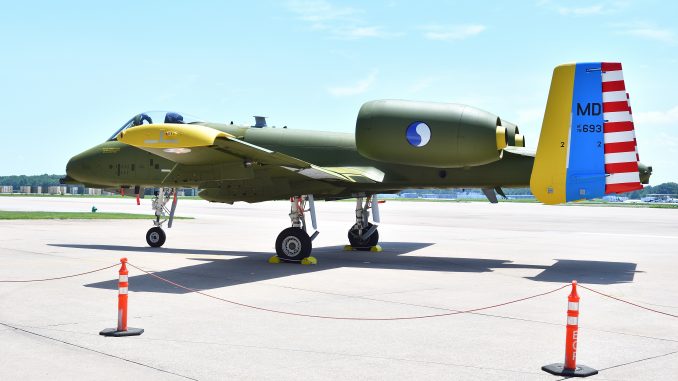
by Stephen Chapis
On June 29, 1921, the 104th Observation Squadron was federally recognized at the now-extinct Logan Field in the Baltimore suburb of Dundalk. This National Guard squadron was the first such post-World War I unit to be equipped with its own aircraft, which initially comprised thirteen Curtiss JN-4 Jennies. During World War II, the 104th flew anti-submarine patrols out of Atlantic City, New Jersey and later from Langley Field, Virginia.
After the war, the unit reactivated at Baltimore Municipal Airport (which closed in December 1960) as the 104th Fighter Squadron (FS), fielding P-47D Thunderbolts. In 1955, the 104th transitioned into a fighter-interceptor squadron (FIS) with F-86H Sabres. Two years later the 104th relocated to an airfield then-known as Glenn L. Martin Company Airport (now Martin State Airport) in Middle River, Maryland. In 1970, the 104th replaced its Sabres with Cessna A-37 Dragonflies, which were in turn replaced with brand-new Fairchild A-10A Thunderbolt IIs in 1979. Three years after their A-10s arrived, the squadron’s military facilities became renamed Warfield Air National Guard (ANGB) base in honor of Major General (Ret) Edwin Warfield III, former Adjutant General of Maryland.
Following the al Qaeda terrorist attacks on September 11, 2001, members of the 175th Wing repeatedly volunteered or were mobilized to take part in the Global War on Terror. From January to June 2003, the 104th Expeditionary Fighter Squadron formed and deployed to Bagram Air Base in Bagram, Afghanistan, where they flew strikes against Taliban and al Qaeda forces; they earned the distinction of being the longest-deployed Air National Guard fighter squadron at Bagram.
In the early 2000s, the Pentagon selected the 104th to become the U.S. Air Force’s lead unit in converting to the new “precision engagement” A-10C Thunderbolt II. Wing personnel were deeply involved in the test and evaluation process and in September 2007, the 104th Fighter Squadron became the first unit to take the A-10C into combat, when it deployed to Al Asad Air Base, Iraq. With the A-10 fleet currently undergoing a wing-replacement program, it is likely that the 104th will continue to operate their beloved ‘Warthogs’ well into the unit’s second century of operations.
On June 29, 2021, Maryland’s Lt. Governor, Boyd Rutherford, presided over a ceremony at Warfield ANGB kicking off a year-long celebration of the Maryland Air National Guard’s (MD ANG) 100 years of service to the state and nation. “For 100 years, the Maryland Air National Guard has been a cornerstone of the defense of this nation, and the protection of this state,” said Maryland’s Governor, Larry Hogan. “When we need the Guard most, it answers the call every single time—whether it’s to protect Marylanders, support humanitarian efforts, or respond to a global pandemic. We could not be prouder of the men and women of the Guard.”
“We are incredibly proud of our rich and distinguished history answering our nation’s call and serving the citizens of Maryland,” continued U.S. Air Force Brig. Gen. Paul Johnson, the 175th Wing’s Commanding Officer. “The future of [the] Wing is bright as our Airmen lead the way by bringing air power to support allies across the globe and protecting our digitally connected world with first-class cyber capabilities.”
A specially marked 104th FS Thunderbolt II served as the backdrop to this event, this being A-10C 79-693 resplendent in a retro paint scheme inspired by the liveries of aircraft which the squadron flew during the 1930s: the Curtiss O-11 Falcon, Consolidated O-17 Courier, and Douglas O-38.


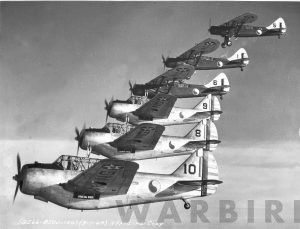
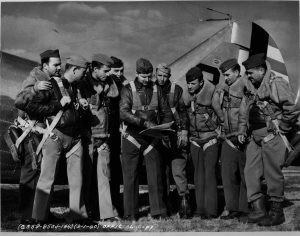
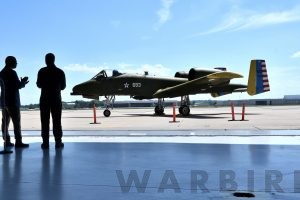
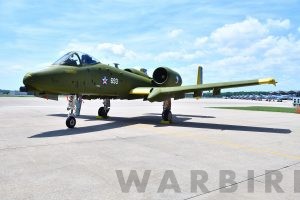
Be the first to comment
Graphic Design, Branding and Aviation Art